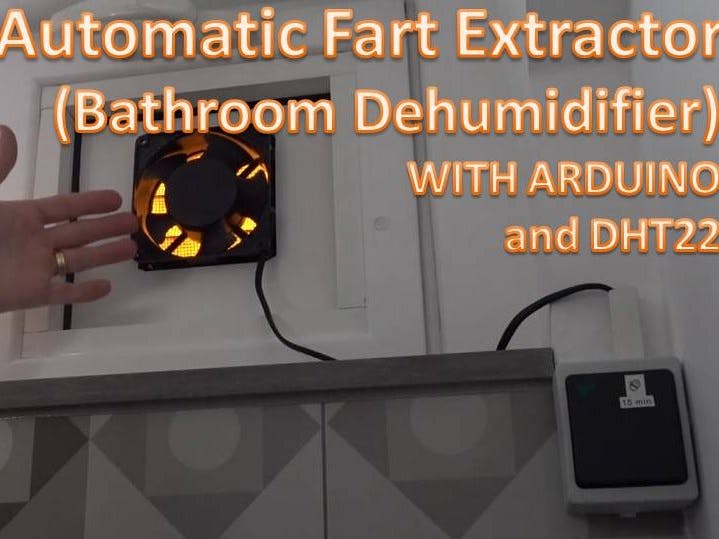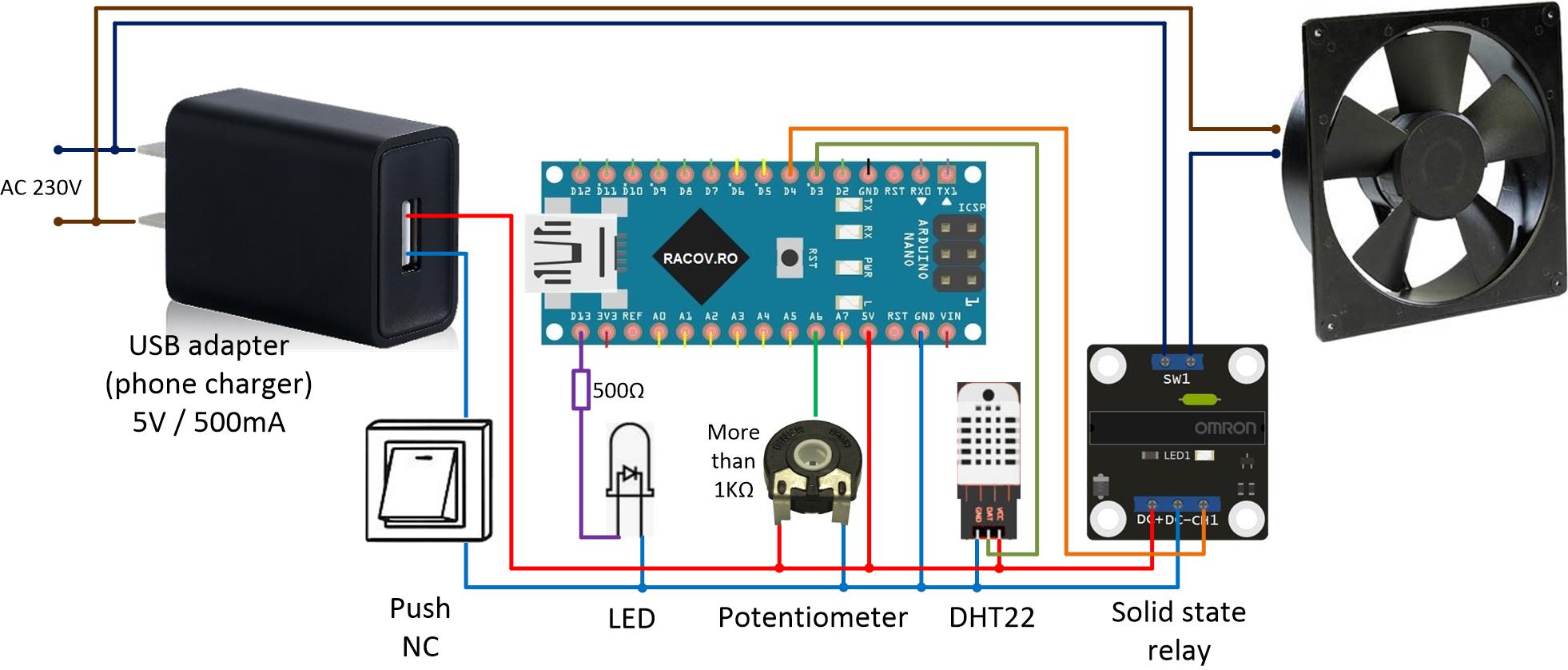Though I am very aware of the problems caused by excess moisture, like mold, and general degradation and decay, plus the health problems, my family is not so much.
I’m using an Arduino Nano because it is small, and the DHT22 temperature and humidity sensor. There is a solid state relay; one can use a normal relay, of course, to turn the fan on and off. The potentiometer’s role is to adjust the trigger threshold, the humidity value where the extraction begins. I set mine at 60% and so far it’s OK. You can always adjust it later to suit your needs. The range is from 30% to 90%, so 60 is right in the middle. The manual trigger occurs when the controller is reset. Indeed I wanted to put the manual trigger delay at boot time, so if by hazard Arduino freezes (and it will once in a while), the manual activation will un-freeze it.There is also an LED, a status LED, breathing slowly the farts and moisture, to show you it is alive, and full lit when the fan is engaged. The manual delay is set at 15 minutes and can be changed in the code.
The power adapter of choice is, of course, a phone charger.
The enclosure I found is a light switch box with a small transparent indicator.
I was trying hard to fit everything inside the box, and to make the connections to the mains and the fan power cable.
Costs and alternatives:
To use such a powerful microcontroller such as Arduino just to read a humidity sensor and to switch on a fan might seem an overkill. And indeed it is. But in terms of costs, this project cost me almost nothing, except the work, of course, which I enjoyed very much. The fan was in my possession for free, the Arduino and the modules are dirt cheap, and the light switch casing also.
But what if I had to start from scratch, what my options would have been?
No.3 – if you already have an extractor and you feel posh, this WiFi module.
You have a phone app with all the bells and whistles, automation, timer, manual control, remote control and what not.
No.2 – if you already have an extractor and just want an automation for it, this humidity controller.
Set the lower limit, the upper limit, and it works. The down side is it doesn’t have a timer, so you’ll have to add this relay delay module, too.
No.1 - My choice - a proper fan with built in humidity sensor, timer, light sensor, even Bluetooth!
There are hundreds and thousands of humidity controller projects on the internet, and mine is one of them, no better, no worse. I just want to emphasis that it's absolutely necessary, and how to implement such an idea.


















Comments
Please log in or sign up to comment.